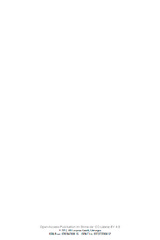‘Fierce Warriors’ or ‘Bloodthirsty Savages’: Albanians in Serbian Textbooks (1882–1941)
2017
Аутори
Pavlović, Aleksandar
Ilić Rajković, Aleksandra
Остала ауторства
Lichnofsky, ClaudiaPandelejmoni, Enriketa
Stojanov, Darko
Поглавље у монографији (Објављена верзија)
Метаподаци
Приказ свих података о документуАпстракт
This article analyses Serbian elementary school textbooks from 1882 to 1941 in order to determine the two main phases or modes of representing Albanians in the Serbian educational system during this period: the rise of hostility towards them in the 1882-1918 period and the ambivalence of the interwar years (1918-1941) when many Albanians became incorporated in the new Kingdom of Yugoslavia.
In distinction to the earlier Serbian perceptions of Albanians as „fierce warriors“ and occasional allies against the Turks, the late nineteenth and early twentieth century textbooks are marked by actual hostility towards the Albanians. The analysis focuses on a popular history textbook of the time by Mihajlo Jović, which saw some 56 editions and three major revisions from 1882 onwards and is thus particularly suitable for the analysis of the dominant discourse and its shifts during this period. The ambivalences towards the Albanians in the interwar period are investigated by looking at their conte...sted presentation as either Serb-hating and treacherous, or as heroic and brave, in the two fourth-year reading books published by Miloš Matović and Milorad Vujanac in 1938.
In conclusion, the authors claim that the presentation of the Albanians in Serbian textbooks throughout this period - while no doubt being biased and prejudiced – is anything but simple and contains ambivalences that witness to the shifting status and attitudes between the two nations. It is therefore important to emphasize those inherently positive attitudes stemming from centuries of shared traditions and coexistence in the Balkans, such as those found in the aforementioned literary texts, or ruptures between the literary-fictional and historico-factual textbook content.
Кључне речи:
serbian-albanian relations / serbian textbooks / Kingdom of Yugoslavia / socialist Yugoslavia / AlbaniansИзвор:
Myths and Mythical Spaces Conditions and Challenges for History Textbooks in Albania and South-Eastern Europe, 2017, 225-236Издавач:
- Göttingen : V&R unipress GmbH
Напомена:
- Studien des Georg-Eckert-Instituts zur internationalen Bildungsmedienforschung Band147 Herausgegeben von Eckhardt Fuchs, Redaktion, Wendy Anne Kopisch unter Mitarbeit von Niamh Burns
Колекције
Институција/група
IFDTTY - CHAP AU - Pavlović, Aleksandar AU - Ilić Rajković, Aleksandra PY - 2017 UR - http://rifdt.instifdt.bg.ac.rs/123456789/1417 AB - This article analyses Serbian elementary school textbooks from 1882 to 1941 in order to determine the two main phases or modes of representing Albanians in the Serbian educational system during this period: the rise of hostility towards them in the 1882-1918 period and the ambivalence of the interwar years (1918-1941) when many Albanians became incorporated in the new Kingdom of Yugoslavia. In distinction to the earlier Serbian perceptions of Albanians as „fierce warriors“ and occasional allies against the Turks, the late nineteenth and early twentieth century textbooks are marked by actual hostility towards the Albanians. The analysis focuses on a popular history textbook of the time by Mihajlo Jović, which saw some 56 editions and three major revisions from 1882 onwards and is thus particularly suitable for the analysis of the dominant discourse and its shifts during this period. The ambivalences towards the Albanians in the interwar period are investigated by looking at their contested presentation as either Serb-hating and treacherous, or as heroic and brave, in the two fourth-year reading books published by Miloš Matović and Milorad Vujanac in 1938. In conclusion, the authors claim that the presentation of the Albanians in Serbian textbooks throughout this period - while no doubt being biased and prejudiced – is anything but simple and contains ambivalences that witness to the shifting status and attitudes between the two nations. It is therefore important to emphasize those inherently positive attitudes stemming from centuries of shared traditions and coexistence in the Balkans, such as those found in the aforementioned literary texts, or ruptures between the literary-fictional and historico-factual textbook content. PB - Göttingen : V&R unipress GmbH T2 - Myths and Mythical Spaces Conditions and Challenges for History Textbooks in Albania and South-Eastern Europe T1 - ‘Fierce Warriors’ or ‘Bloodthirsty Savages’: Albanians in Serbian Textbooks (1882–1941) SP - 225 EP - 236 DO - 10.14220/9783737008112.225 ER -
@inbook{
author = "Pavlović, Aleksandar and Ilić Rajković, Aleksandra",
year = "2017",
abstract = "This article analyses Serbian elementary school textbooks from 1882 to 1941 in order to determine the two main phases or modes of representing Albanians in the Serbian educational system during this period: the rise of hostility towards them in the 1882-1918 period and the ambivalence of the interwar years (1918-1941) when many Albanians became incorporated in the new Kingdom of Yugoslavia.
In distinction to the earlier Serbian perceptions of Albanians as „fierce warriors“ and occasional allies against the Turks, the late nineteenth and early twentieth century textbooks are marked by actual hostility towards the Albanians. The analysis focuses on a popular history textbook of the time by Mihajlo Jović, which saw some 56 editions and three major revisions from 1882 onwards and is thus particularly suitable for the analysis of the dominant discourse and its shifts during this period. The ambivalences towards the Albanians in the interwar period are investigated by looking at their contested presentation as either Serb-hating and treacherous, or as heroic and brave, in the two fourth-year reading books published by Miloš Matović and Milorad Vujanac in 1938.
In conclusion, the authors claim that the presentation of the Albanians in Serbian textbooks throughout this period - while no doubt being biased and prejudiced – is anything but simple and contains ambivalences that witness to the shifting status and attitudes between the two nations. It is therefore important to emphasize those inherently positive attitudes stemming from centuries of shared traditions and coexistence in the Balkans, such as those found in the aforementioned literary texts, or ruptures between the literary-fictional and historico-factual textbook content.",
publisher = "Göttingen : V&R unipress GmbH",
journal = "Myths and Mythical Spaces Conditions and Challenges for History Textbooks in Albania and South-Eastern Europe",
booktitle = "‘Fierce Warriors’ or ‘Bloodthirsty Savages’: Albanians in Serbian Textbooks (1882–1941)",
pages = "225-236",
doi = "10.14220/9783737008112.225"
}
Pavlović, A.,& Ilić Rajković, A.. (2017). ‘Fierce Warriors’ or ‘Bloodthirsty Savages’: Albanians in Serbian Textbooks (1882–1941). in Myths and Mythical Spaces Conditions and Challenges for History Textbooks in Albania and South-Eastern Europe Göttingen : V&R unipress GmbH., 225-236. https://doi.org/10.14220/9783737008112.225
Pavlović A, Ilić Rajković A. ‘Fierce Warriors’ or ‘Bloodthirsty Savages’: Albanians in Serbian Textbooks (1882–1941). in Myths and Mythical Spaces Conditions and Challenges for History Textbooks in Albania and South-Eastern Europe. 2017;:225-236. doi:10.14220/9783737008112.225 .
Pavlović, Aleksandar, Ilić Rajković, Aleksandra, "‘Fierce Warriors’ or ‘Bloodthirsty Savages’: Albanians in Serbian Textbooks (1882–1941)" in Myths and Mythical Spaces Conditions and Challenges for History Textbooks in Albania and South-Eastern Europe (2017):225-236, https://doi.org/10.14220/9783737008112.225 . .


